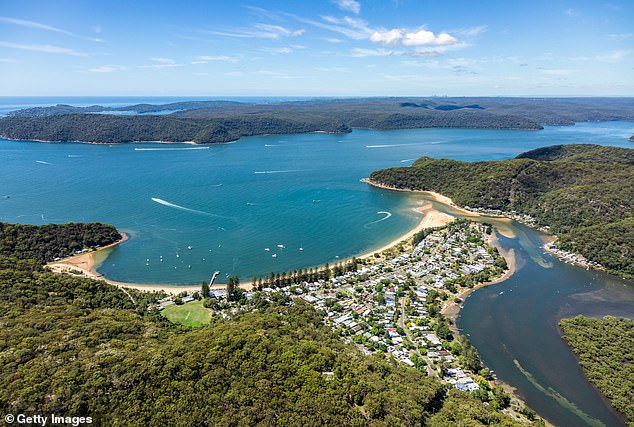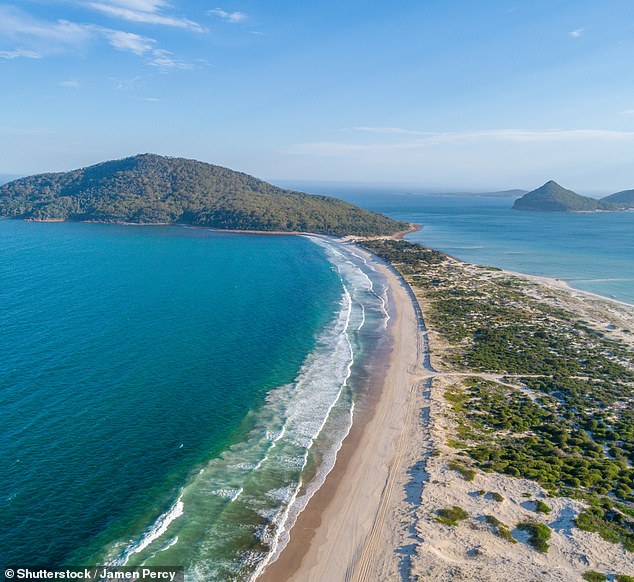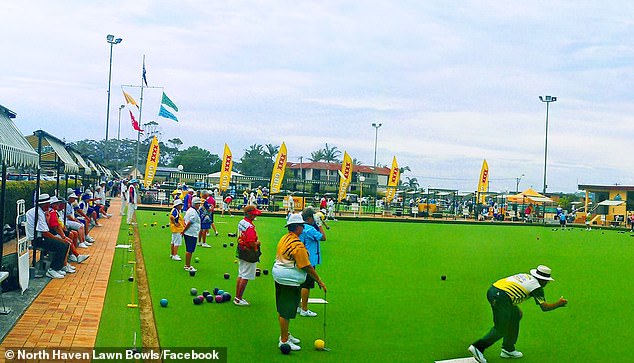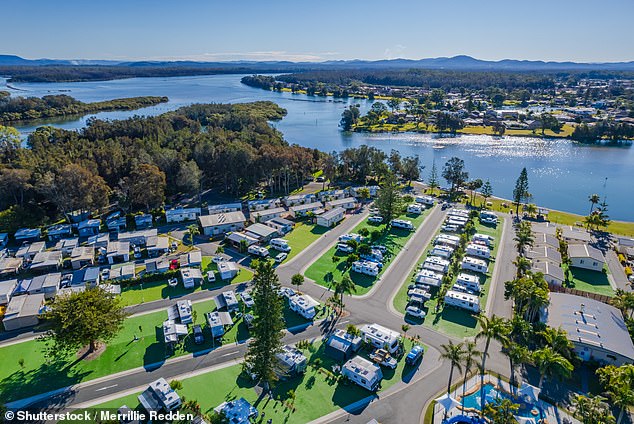The top property hotspots for Sydney downsizers: Dreaming of a new life in retirement now you don’t have to worry about school catchments and train lines? Read our definitive guide
Choosing where to live is one of the most important decisions a person can make.
But for downsizers it is also a period of great excitement, because – perhaps for the first time – it is a choice based solely on getting the most out of life, and not on practical considerations around family and career.
Freed from the restrictions of school catchment areas and commuter links, baby boomer retirees whose children have fled the nest have the well-deserved privilege of wondering which coastal town to call home.
Empty nesters who have lived most of their lives in a busy metropolis are increasingly selling their belongings in expensive markets in the capital, such as Sydney, and moving to beach paradises, moving into a smaller home or into a retirement home in the regional New South to live in Wales.
These postcodes also have a much older population, with an average age of around 60 – a level much higher than the middle of Australia, which is 38.
They are mainly located within a four-hour drive of Sydney, meaning retirees who choose to move there can still regularly visit their old friends by driving along the Pacific Highway or taking the train.
Downsizers typically bought their first properties in the 1970s and 1980s, when homes were affordable for middle-income people paying off a mortgage on one income.
With plenty of money in the bank after the sale, those old enough to either enjoy retirement or qualify for the old age pension now have plenty of choice on the beach.
Baby boomers looking to downsize are flocking to coastal towns near national parks where it is so quiet there are no traffic lights, including Pearl Beach (photo)
Data shows that baby boomers undergoing major change are choosing coastal hotspots without busy main roads or even a single traffic light.
What makes these destinations so attractive, thinks Eliza Owen, head of research at CoreLogic, is their proximity to major hospitals and the abundance of paramedics such as physiotherapists.
“(Regional NSW) has traditionally been a cheap seaside option for older Australians to enjoy their retirement,” she tells me.
“Those places would still be a lot cheaper than the Sunshine Coast and the Gold Coast and there’s also a lot of healthcare infrastructure built around that – like hospitals and aged care, physiotherapy – and there are young professionals in that sector moving there. all that work.”
Pearl beach
- Beach town overlooks Broken Bay
- Average age of 64 in Pearl Beach
- Houses more expensive than even Sydney
This exclusive enclave on the central coast of New South Wales offers panoramic views over Broken Bay of Lion Island and Palm Beach, on the northern edge of Sydney.
There is only one winding road to Pearl Beach via the Brisbane Water National Park.
The average age here is 64 years, while neighboring Patonga is older, at 65 years.
Both are significantly higher than the 44 in nearby Umina, where Generation X and Millennial couples are more likely to raise their children.
Pearl Beach’s average house price of $1.648 million is also more expensive than greater Sydney’s $1.474 million, suggesting those moving here to downsize have cashed out and are leaving pricier suburbs to retire.
This area is more expensive than the Gold Coast and Sunshine Coast, where homes near the beach typically cost more than $1 million.

The average age of Patonga (photo) is 65 years
Hawk’s nest
- Area has Australia’s oldest inhabitants
- Former Prime Minister John Howard spent his holidays there
- Just an hour’s drive north of Newcastle
This seaside resort, an hour’s drive north of Newcastle, is where former Liberal Prime Minister John Howard holidayed with his family for nineteen years.
That was until The Newcastle Herald controversially published a photo of their holiday home on its front page in 1998, encouraging readers to visit with a bucket of prawns to protest the impending closure of a steelworks.
Known for its white sands, Hawks Nest has an average age of 61 and a median house price of $886,539 – well above Australia’s regional level of $654,849.
It is across the street from Tea Gardens, where the average age is higher at 69 years.
Both cities are near Myall Lakes, where retirees have a choice of kayaking, golf or a beach perfect for fishing.

Hawks Nest (pictured) and Tea Gardens are both close to Myall Lakes and offer retirees the choice of kayaking, golf or a beach perfect for fishing
Camden Haven
- Area south of Port Macquarie
- An older average age of 67 years
- Has beaches, a lagoon, a lake and a mountain
The Camden Haven region, south of Port Macquarie, is close to beaches, a mountain, a lake, a lagoon and several national parks.
This area of NSW’s mid-north coast also has a population ranging from 61 on the surf side of North Haven to 63 in Dunbogan across the Camden Haven River.
Laurieton, the area’s main town centre, is slightly older at 67 years old and is home to several aged care centers in the area.
The median home price is under $800,000 in North Haven and Laurieton, but closer to $900,000 in Dunbogan, which has a gated community with beach views.

The Camden Haven region, south of Port Macquarie, is next to beaches, a mountain, a lake, a lagoon and several national parks (pictured is the North Haven Lawn Bowls Club).
Tuncurry
- Right next to Forster
- In the Great Lakes region
- Driving distance to Sydney
Just across the Coolongolook River from Forster Beach, a three and a half hour drive from central Sydney, this town has an average population of 62.
Located in the Great Lakes region of NSW, it covers Lake Valais, known for its oysters.
Tuncurry has an average house price of $788,306 and an average apartment price of just $527,490, giving retirees with less savings some choice in coastal accommodation.
Unlike the other downsizing hotspots, Tuncurry has traffic lights on Manning Street, which heads towards the Head Street Bridge into Forster.
With most retirement havens located near Sydney, Ms Owen says many choose a place within driving distance of their old home.
“It’s not necessarily a short drive from Tuncurry to Sydney, but it’s easier than getting on a plane and traveling back and forth from the Sunshine Coast or Gold Coast,” she explains.

Tuncurry (pictured), across the Coolongolook River from Forster Beach, has an average population of 62
